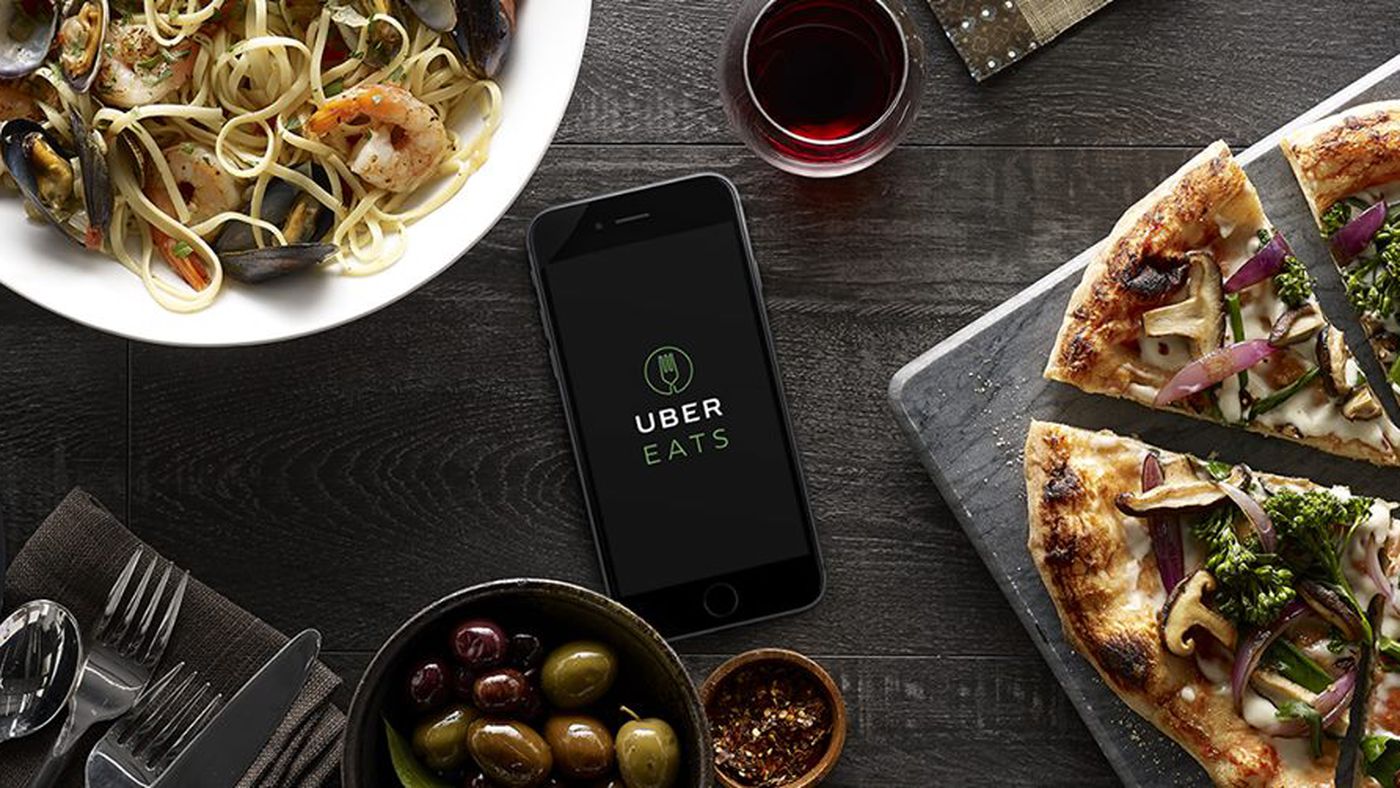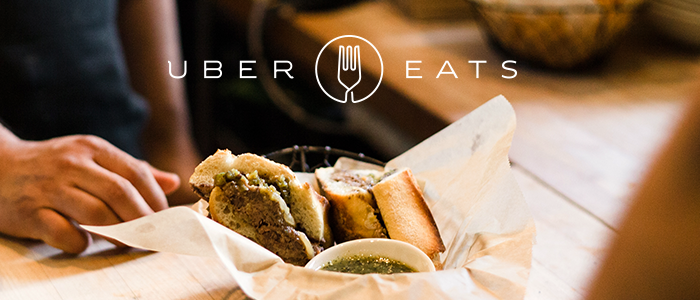Introduction
In 2025, Uber Eats has emerged as a trailblazer in the food delivery industry, revolutionizing how people access their favorite meals. With a blend of cutting-edge technology, strategic partnerships, and a commitment to customer satisfaction, Uber Eats is setting new standards for convenience and innovation.
1. Autonomous Delivery: The Future at Your Doorstep
Uber Eats has been at the forefront of integrating autonomous delivery solutions into its operations. Collaborations with companies like Serve Robotics and Avride have led to the deployment of AI-powered sidewalk robots in cities such as Los Angeles and Jersey City. These robots, capable of traveling up to 5 mph and covering 31 miles on a single charge, are designed to operate in various weather conditions, ensuring reliable service.
Key Developments:
- Partnership with Serve Robotics and Avride
- Sidewalk robots deployed in high-traffic urban zones
- Robots last 31 miles per charge
- Operational in rain, wind, and other weather conditions
- Deployed in Los Angeles, Jersey City, and additional cities
2. AI and Predictive Analytics: Enhancing Efficiency
Artificial Intelligence (AI) plays a pivotal role in Uber Eats‘ operations. By leveraging AI and predictive analytics, the platform can forecast demand, optimize delivery routes, and manage inventory more effectively. This not only ensures timely deliveries but also enhances the overall customer experience.
Key Features:
- Predictive modeling forecasts peak order times
- AI-powered route optimization reduces delivery delays
- Intelligent learning from customer behavior and preferences
- Smarter inventory and restaurant order prep syncing
- Real-time dynamic adjustments during traffic or weather events
3. Personalized Customer Experience
Understanding customer preferences is key to Uber Eats‘ success. Through data analysis, the platform offers personalized menus, targeted promotions, and tailored delivery schedules. This level of customization ensures that customers receive recommendations that align with their tastes and dietary needs, fostering loyalty and satisfaction.
Highlights:
- Smart menu curation based on previous orders
- Tailored coupons and discounts
- AI-enhanced customer profiling for dietary restrictions
- Customized delivery time suggestions
- Quick reorder functionality for favorite meals
4. Expansion into Regional Markets
Uber Eats has significantly expanded its reach into regional areas, particularly in Australia. By launching services in over 100 regional towns, the platform aims to provide the same level of convenience to rural communities as it does in metropolitan areas. This expansion is projected to generate substantial economic benefits, including increased revenue for local restaurants and enhanced consumer wellbeing.
Notable Impacts:
- Services launched in over 100 regional towns
- Boost to local restaurants’ visibility and income
- Equal access to fast delivery in non-urban areas
- Support for independent food businesses
- Job creation through local delivery partnerships
5. Teen-Friendly Features: Empowering the Next Generation
Recognizing the need for age-appropriate services, Uber Eats introduced “Eats for Teens,” a new account type designed for users aged 13-17. This feature allows teenagers to order food independently while providing parents with tools to monitor and manage their teen’s spending and order history. The initiative balances autonomy for teens with safety and parental oversight.
Teen Account Features:
- Dedicated teen accounts for ages 13–17
- Parental approval for all orders
- Spending limits and real-time notifications for guardians
- Full order tracking for family transparency
- In-app chat moderation and content filters
6. Strategic Partnerships: Enhancing the Dining Experience
Uber Eats has formed strategic partnerships to enrich its service offerings. A notable collaboration with OpenTable integrates restaurant reservations with delivery services, providing a seamless dining experience for customers. This integration allows users to choose between dining in or ordering food for delivery from their favorite restaurants, all within a unified platform.
Integration Benefits:
- OpenTable integration for booking tables
- Multi-service ecosystem for dining in or ordering out
- Access to restaurant previews, menus, and reviews
- Calendar syncing for reservations and deliveries
- Unified location-based food and dining services
7. Embracing Sustainability
Sustainability is a core focus for Uber Eats in 2025. The platform has adopted eco-friendly practices, including the use of biodegradable packaging and optimized delivery routes to reduce carbon emissions. These initiatives not only benefit the environment but also resonate with environmentally conscious consumers.
Sustainability Initiatives:
- Use of biodegradable and recyclable packaging
- Carbon offset programs and green delivery options
- Promotion of eco-friendly transport like e-bikes and scooters
- Customer rewards for choosing sustainable options
- Waste reduction through smarter order planning
8. Subscription-Based Services: Convenience and Savings
To cater to the evolving needs of customers, Uber Eats offers subscription-based meal services. These plans provide users with regular deliveries of pre-planned meals or meal kits, offering convenience and cost savings. Subscription models also enable the platform to forecast demand more accurately, reducing food waste and optimizing delivery schedules.
Subscription Benefits:
- Weekly or monthly meal plan options
- Exclusive discounts for subscribers
- Meal kits with pre-measured ingredients
- Access to chef-curated menus
- Flexible options to skip or reschedule deliveries
9. Virtual Restaurants: A New Dining Paradigm
The rise of virtual restaurants, also known as ghost kitchens, has transformed the food delivery landscape. These delivery-only establishments operate without a traditional storefront, allowing for reduced overhead costs and increased efficiency. Uber Eats has embraced this model, offering customers a diverse range of cuisines prepared exclusively for delivery.
Advantages of Ghost Kitchens:
- Operate from cost-efficient, delivery-only spaces
- Broader cuisine offerings without physical storefronts
- Real-time menu changes based on demand
- Faster deliveries due to hyper-local food hubs
- Lower overhead allows for competitive pricing
10. Technological Innovations: Streamlining Operations
Uber Eats continues to invest in technological advancements to enhance its services. The platform utilizes real-time data infrastructure and deep reinforcement learning algorithms to optimize courier dispatching and fleet management. These innovations ensure efficient operations and improve delivery times, contributing to a superior customer experience.
Operational Enhancements:
- AI dispatch systems based on reinforcement learning
- Real-time data analytics for logistics and tracking
- GPS tracking with predictive arrival estimates
- Automation for managing peak-hour loads
- Courier app improvements for traffic and route updates
11. Data-Driven Performance: Uber Eats in Numbers (2025)
The following table provides a snapshot of Uber Eats‘ performance metrics and growth indicators in 2025:
| Metric | Value (2025) |
|---|---|
| Number of Countries Served | 45+ |
| Active Monthly Users | 180 million+ |
| Average Delivery Time | 22 minutes |
| Orders via Autonomous Robots | 4.3 million+ |
| Teen Account Activations | Over 12 million |
| Number of Ghost Kitchens | 28,000+ |
| Subscription Users | 20 million+ |
| Average Sustainability Rating | 4.7/5 (user rated) |
| Restaurants on Platform | Over 1 million |
Conclusion
In 2025, Uber Eats stands as a pioneer in the food delivery industry, continually redefining the standards for convenience, innovation, and customer satisfaction. Through the integration of autonomous delivery systems, AI-driven personalization, strategic partnerships, and a commitment to sustainability, Uber Eats is not only meeting the demands of the modern consumer but also shaping the future of food delivery.
As cities become smarter and lifestyles more digital, Uber Eats is poised to remain a leader by evolving with consumer expectations and technological advancements. Its ability to scale operations while maintaining a strong focus on innovation, user experience, and social responsibility sets it apart in a highly competitive landscape.





